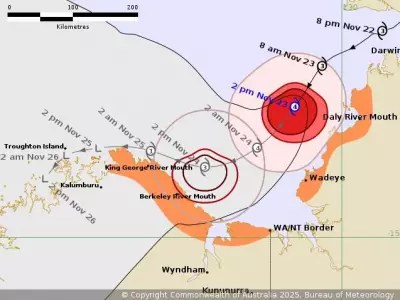
While Wednesday night's spectacular aurora australis display has faded, space weather experts confirm another celestial show could light up Australian skies sooner than you think.
The Science Behind the Southern Lights
The breathtaking five-hour aurora display that captivated crowds from the Illawarra to the South Coast on Wednesday, November 12, resulted from an intense geomagnetic storm now in its weakening phase. Dr Sarah Reeves from the Bureau of Meteorology explained that while the peak conditions have passed, the sun will release more plasma explosions in the near future.
"The geomagnetic conditions that were giving rise to the aurora last night, those have peaked now, and they're on a weakening trend," Dr Reeves said. "Unless you're in Tasmania, there is only a slim chance of seeing it on Thursday night."
What Creates These Celestial Displays?
According to Dr Reeves, who serves as the bureau's space sector engagement lead, auroras begin with solar flares - giant clouds of plasma traveling at millions of kilometres per hour from the sun. These coronal mass ejections interact with Earth's magnetic field and atmosphere, producing the stunning light displays Australians witnessed this week.
"The colours typically come from light that is released by the molecules of our atmosphere, particularly oxygen and nitrogen, which make up most of our atmosphere," she explained. "You're seeing light emitted by those molecules as a result of collisions and interactions with that incoming plasma."
Predicting Nature's Light Show
Despite their spectacular nature, auroras remain challenging to predict with precision. Once a solar flare occurs, it can take anywhere between half a day and a couple of days for the resulting aurora to become visible on Earth. However, the exact timing and location of optimal viewing cannot be determined in advance.
Dr Reeves noted that the extended aurora display visible around 8pm to 9pm on Wednesday was particularly fortunate, as these natural phenomena can occur at any time during nighttime hours.
How to Maximise Your Aurora Viewing Chances
For those hoping to catch the next southern lights display, positioning is crucial. The brightest auroras concentrate in rings called auroral ovals around the south pole. To improve your viewing prospects:
- Find locations with minimal artificial lighting, away from streetlights and residential areas
- Look toward the southern horizon
- Remember that the further south you are in Australia, the better your chances
While Wednesday's spectacular show has passed, solar activity ensures that another opportunity to witness the aurora australis will arrive soon. With the right conditions and location, Australians might soon enjoy another breathtaking display of nature's celestial fireworks.





